ECTS Iain T Boyle Award
2015 ECTS Iain T Boyle Award was presented to Nicolas Bonnet (Geneva Switzerland) by Serge Ferrari during the ECTS–IBMS 2015 annual congress in Rotterdam, The Netherlands.
Nicolas Bonnet, Geneva, Switzerland
Dr. Bonnet received his PhD degree from the University of Orleans, France, in 2006. Then, he came to the Division of Bone Diseases laboratory, Geneva University Hospitals and Faculty of Medicine, Geneva, Switzerland for a post-doctoral fellowship. Dr Bonnet has developed a great interest in the molecular and signaling mechanisms involved in the influence of physical activity on skeleton structure and function. His previous research projects have focused on the role of the beta-adrenergic system during treadmill exercise in rodents, which has led to a number of important findings and publications. The amount of work and publications that Dr Bonnet has achieved during his PhD training years is quite remarkable. Since he joined the Geneva laboratory 7 year ago, his creativity and enthusiasm in developing new research hypotheses and new experimental approaches in this field have been very impressive. He has received the promotion ‘Maitre assistant’ from the Geneva Faculty of Medicine in 2009, allowing him to pursue his academic development.
His ongoing research projects aim to investigate the regulation of the newly recognized periostin molecular signaling pathway in the skeletal response to loading mediated by the Sclerostin-Wnt pathway. Better understanding of the signaling molecules involved in mechano-transduction, and Sclerostin-Wnt signaling in particular, is crucial for the development of new therapeutic approaches for bone anabolism. These projects received several awards such as the young investigator award from ECTS and the president award from the ASBMR. Several original articles have already been accepted and several manuscripts are in preparation. His research continues to be supported by institutional and industrial funds.
Scientifically highly creative, hard worker, and sharing excellent contacts with all the members of the research and clinical teams of the group, Dr Bonnet has developed a strong network inside and outside of the faculty and is therefore a most dedicated and promising young investigator.
Dr Bonnet is going to become an independent investigator in the division of Bone diseases, allowing him to move along his promising carrier in the Geneva Faculty of Medicine and thereby generate a new bridge between metabolic bone and muscle diseases.
Andrea Del Fattore, Rome, Italy
Andrea graduated in Medical, Molecular and Cellular Biotechnology at La Sapienza University in Rome. Then, he did his PhD in Biotechnology in the Bone Biopathology Laboratory headed by Prof. Anna Teti, at the Department of Experimental Medicine of the University of L’Aquila, in 2005. Since the very beginning, his research activity was focused on the genetics and cell biology of a rare human condition, which is osteopetrosis. He had the great opportunity to be trained in one of the laboratory which made the history of bone biology in Europe, so under the guidance of his mentor Prof Teti he became expert in the investigation of both the osteoclast and the osteoblast cell lineage, in human and mouse models, both in vitro and in vivo. His research activity has covered several different aspects, including cancer-related osteolysis, the influence of energy metabolism on bone remodeling, osteoimmunological network, preclinical studies of experimental therapies for the prevention of bone loss, the role of microvesicles in mesenchymal stem cell immunomodulation. Very recently he reported the generation of the first Autosomal Dominant Osteopetrosis Type II mouse model. He received funds and several awards from the ECTS and other scientific societies for his activity. Andrea is a highly motivated and hardworking young scientist, has good communicating skills and is involved in student training activities.
Riku Kiviranta, Turku, Finland
Riku pursued his PhD in the Department of Medical Biochemistry and Genetics at the University of Turku, Finland. He completed his MD in December 2000 and received his PhD in December 2004. He continued his post-doctoral work at Yale University and then at Harvard School of Dental Medicine, returning to the University of Turku in January 2010. He was elected into a group leader position of Turku Collegium for Science and Medicine and is now leading his own research group within the Department of Medical Biochemistry and Genetics and Department of Medicine at the University of Turku, Finland. He was also appointed as an Adjunct Professor of Molecular Medicine at the University of Turku. Now in his own group, he has continued to work on transcriptional regulation of osteoblast differentiation and function as well as the role of osteoblasts in the hematopoietic stem cell niche. But he has also expanded his research to more translational studies, such as the collaborative work on describing novel WNT1 mutations as causes for severe early onset osteoporosis and osteogenesis imperfect. Moreover, Dr. Kiviranta has ongoing projects combining state-of-the-art imaging using positron emission tomography (PET) with metabolic and molecular studies to understand the role of bone marrow fat that are approaching publication stage.
Christa Maes (Leuven, Belgium)
Christa graduated as Bio-engineer, specialty Cell- and Gene Biotechnology, at the KU Leuven. She next switched to the Faculty of Medicine, where she obtained her PhD “Angiogenesis and Bone: The role of the vascular endothelial growth factor family in bone development and repair” in 2004. During her postdoctoral studies she undertook several stays abroad. In the lab of Theresa Guise (then at the University of Virginia; currently at Indiana University) she was trained in the study of bone metastasis in mice. During a 2.5-year postdoctoral research period with Henry Kronenberg at Harvard Medical School (Boston) she optimised transgenic mouse models for osteoblast lineage cell visualization and tracing, tools that led to new insights in the origin and behaviour of osteoprogenitors and osteoblasts in bone development and healing fractures. Christa is a highly motivated and hardworking young scientist, who in the opinion of the Grants Committee has contributed significantly to the field of bone and mineral research.
Aymen Idris, Edinburgh, UK
Dr Idris is a talented young researcher with an excellent publication record who is currently becoming established as independent researcher in the area of bone and cancer. He recently has been appointed to a non-clinical lectureship in Edinburgh Cancer Research Centre. Dr Idris graduated with a 2.1 honours Bsc in pharmacology at Sunderland University in 1998. He completed an MSc in Clinical Pharmacology at Aberdeen University and then completed his PhD at Aberdeen under the supervision of myself and my colleague Dr Rob Van’t Hof. Subsequently Dr Idris worked under my supervision as a postdoctoral research fellow where he carried out some groundbreaking research on the skeletal effects of endocannabinoids and their receptors with publications in “Nature Medicine”, “Endocrinology” and “Cell Metabolism”. Dr Idris also has conducted important research into the role of the NFkB signaling pathway in bone disease resulting in papers in the JBMR and FASEB J and is co-inventor of a novel series of biphenyl carboxylic acid derivatives which exert inhibitory effects on NFkB signalling probably by inhibiting TRAF recruitment to the intracellular domain of TNF receptor superfamily members. Dr Idris is also a strong supporter of ECTS and a regular attendee at the annual meeting, where he has won numerous young investigator awards. He has also contributed regularly to the ECTS PhD training courses and was member of the ECTS board from 2011-2013.
Omar Albagha, Edinburgh, UK
Omar is one of the brightest young investigators in the field of bone disease genetics. He has contributed significantly to understanding of the genetic basis of osteoporosis through candidate gene studies and linkage studies and recently has done some outstanding research on the genetic determinants of Paget’s disease with a paper in nature Genetics last year and a further Nature Genetics paper in revision.
Fernando Rivadeneira, Rotterdam, The Netherlands
Fernando performed excellent work in Genetics of Osteoporosis, in particular in the area of Genome Wide Association Studies. He gained his PhD 2004 and has published 104 papers – leading the GWA studies conducted within the genetic research group in Rotterdam. He has published significant papers on this an related topic.
Dr Claire Edwards trained initially in bone and cancer biology at the University of Sheffield with Prof. Peter Croucher and Prof. Mike Rogers. It was during this time that she became the first to uncover the role of bisphosphonates, not only as drugs that impair the progression of the bone disease in myeloma, but also as potential cytotoxic agents for the myeloma cells themselves. During her postdoctoral studies at the Institute of Musculoskeletal Sciences, University of Oxford with Prof. Graham Russell and Prof. Peter Croucher she expanded upon her initial training at Sheffield. While at Oxford, Claire became one of the first to recognize the importance of the bone marrow microenvironment in cancer-induced bone disease, focusing on the RANKL/OPG system, specifically the role of OPG as both a therapeutic approach and a bone marrow-derived survival factor for myeloma cells. In 2004, she relocated to the University of Texas Health Science Center at San Antonio to work with my group and establish herself as an independent investigator. During this time she gained extensive first-hand experience with our well-established myeloma model and advanced molecular techniques, which she enthusiastically applied to her ongoing research. In 2006 she moved to Vanderbilt University Medical Center, where she is currently an Assistant Professor in the Center for Bone Biology Department of Cancer Biology. During her time in the U.S., she has made considerable advances in the field of myeloma bone disease, with a seminal paper in Blood demonstrating the potential for increasing Wnt signaling as a therapeutic approach in myeloma bone disease, but also raising concerns over the proliferative effects of elevated Wnt signaling in myeloma cells at extra-osseus sites. This striking observation fueled her interest in the bone microenvironment and more specifically, how bone marrow stromal cells and adipokines contribute to bone cell regulation and myeloma bone disease, which has now become the focus of her current research. A major limitation to existing models of cancer-induced bone disease is the requirement of a specific host strain of mouse. This feature restricts the research potential of these models considerably by preventing the molecular examination of the host microenvironment. Work undertaken by Claire has recently resulted in her development of a novel myeloma model that enables the establishment of multiple myeloma and the associated bone disease in genetically modified mice. This model is a major advance for research into myeloma bone disease. In addition to these findings, she has forged international multi-disciplinary collaborations, allowing her to pursue new, innovative approaches to the analysis of normal skeletal biology and cancer-induced bone disease through the use of mathematical modeling, novel cell culture systems and human patient samples.
Dr Morten Asser Karsdal
achieved his master of biotechnical engineering at the “Technical University of Denmark” in 1998. He achieved his PhD at the “Technical University of Southern Denmark” 2004, with special focus on the cell and molecular biology of bone. Dr Karsdal is presently the Head of Pharmacology at Nordic Bioscience, and has previously had various research positions at smaller biotech companies in Denmark. He has more than 55 peer reviewed publications within the bone and cartilage field. Dr Karsdal is presently involved in investigating a potential anabolic signaling from osteoclasts to osteoblasts and the role of the chloride channel ClC-7 in osteoclasts. Another of his main interests is the interaction between bone and cartilage in the pathogenesis of osteoarthritis. Lastly, development of new biological models and biochemical assays for understanding of the disease and to monitor and identify potential treatments for bone and cartilage pathologies are major areas of interest.
Dr Cristina Sobbachi
started her research working on primary immunodeficiencies, contributing to several papers on Omenn syndrome and RAG-dependent diseases. Soon she became interested in the genetics of osteopetrosis, co-authoring a manuscript reporting the isolation of the first gene TCIRG1 responsible for human autosomal recessive osteopetrosis ARO. From then on, she became deeply involved in the characterization of this severe disease and her 2001 paper on TCIRG1-dependent ARO is frequently cited as a reference paper for the molecular analysis of this disease. In spite of two one-year maternal leaves, she was able to actively pursue this field and to contribute to several papers on the characterization of the heterogeneity of this disease, including a 2003 paper on the various forms of ClCN7 pathologies, and to an interesting paper on in utero hematopoietic stem cell transplantation, a strategy that has proved able to rescue the severe phenotype in the experimental animal. Finally, she hypothesised the existence of the osteoclast-poor form of ARO and contributed as a main author to the first paper demonstrating RANKL mutations in human ARO. This paper was followed by the recent demonstration of a second form of osteoclast-poor ARO due to RANK. She is currently pursuing novel approaches for the treatment of RANKL-dependent ARO by soluble RANKL administration in a rankl knockout mouse model in collaboration with AMGEN, the company which produces this cytokine
Dr Rutger van Bezooijen
was selected as the sixth recipient of the ECTS/Alliance for Better Bone Health Iain T Boyle award, which was presented during the 35th European Symposium on Calcified Tissues in Barcelona on 27 May 2008. Dr Bezooijen is based at the Leiden University Medical Centre in the Netherlands and his current interest is focused on characterization of the mechanism by which sclerostin affects Wnt signaling, the regulation of sclerostin expression, and detailed clinical analysis of patients with sclerosteosis and van Buchem disease.
Dr Uwe Kornak
was selected as the fifth recipient of the ECTS/Alliance for Better Bone Health Iain T Boyle award, which was presented during the 34th European Symposium on Calcified Tissues in Copenhagen on 8 May 2007. Uwe Kornak is based at the Institute for Medical Genetics in Berlin, Germany and his main interests are the regulation of bone density and NFI and bone. His main focus in the past has been the pathogenesis of recessive and dominant forms of osteopetrosis, which turned out to be caused by defects in intracellular acidification mechanisms. He has subsequently become involved with developmental aspects of skeletogenesis and the role of different transcription factors like Hoxd13, Runx2 and Mef2c. Recently, the scope of his interests was further broadened by investigations on Golgi function in bone homestasis.
Dr Florent Elefteriou
was selected as the fourth recipient of the Alliance for Better Bone Health Iain T Boyle award.
Dr Elefteriou was trained in biochemistry and genetics in Claude-Bernard University (France) and then Baylor College of Medicine (USA) and is leading since 2005 his own research group at UT-Health Science Center of San Antonio. His major scientific contribution to the bone field has been to uncover the role of the central and peripheral nervous systems in the regulation of bone remodeling.
His seminal work has demonstrated that hypothalamic neurons responsive to the adipocyte-derived hormone leptin inhibits bone formation and favor bone resorption via the sympathetic nervous system and b2-adrenergic receptors expressed by osteoblasts. He has also identified using number of mutant mouse models the neuropeptide CART and the melanocortin 4 receptor as additional and possible central molecules involved in bone mass homeostasis.
His current research focuses on b2-adrenergic signaling in osteoblats and on the characterization of the molecular mechanisms causing the skeletal defects observed in Neurofibromatosis
Dr Tjeerd van Staa
was selected as the third recipient of the Alliance for Better Bone Health (Procter & Gamble Pharmaceuticals and Sanofi-Aventis) award. Dr van Staa has made major contributions to the epidemiology of osteoporosis, with particular regard to glucocorticoid-induced bone loss. His seminal work has demonstrated that fracture risk in glucocorticoid treated patients rises steeply soon after commencement of therapy; attenuates rapidly after cessation of therapy; and occurs at prednisolone doses less than those conventionally associated with osteoporosis. His scholarly contributions have had a major input upon clinical practice and have been highly cited in the peer reviewed literature. He continues to hold academic positions at the MRC Epidemiology Resource Centre, University of Southampton and Institute for Pharmaceutical Sciences, Utrecht University, the Netherlands.
Wim Van Hul
was selected as the second recipient of the prestigious Alliance for Better Bone Health Iain T. Boyle award. He is a researcher trained in molecular biology and genetics who started, after his PhD studies on the genetics of Alzheimer’s disease, his own research team at the Department of Medical Genetics at the University and University Hospital in Antwerp, Belgium. In the last decennium, his team has been very successful in identifying and characterizing genes underlying, mainly monogenic, genetic conditions associated with an abnormal bone homeostasis. These include the SOST gene underlying Van Buchem disease and sclerosteosis, the role of TGFbeta-1 in Camurati-Engelmann disease, the chloride channel ClCN7 in autosomal dominant osteopetrosis, LRP5 in different sclerosing bone dysplasias as well as the involvement of Msx2 and Alx4 in ossification defects of the skull. He is currently coauthor of about 80 publications, many of them in journals of high impact.
Michael Rogers
is an outstanding young scientist and is a worthy recipient of this prestigious award. His major scientific achievement has been to elucidate the molecular mechanisms of action of bisphosphonate drugs. He and his group are at the forefront of this research and have clearly shown that bisphosphonates act on osteoclasts by two distinct mechanisms. Simple bisphosphonates become incorporated into toxic ATP analogues that induce osteoclast apoptosis, whereas the more potent nitrogen-containing bisphosphonates prevent prenylation of small GTPase signalling proteins by inhibiting the enzyme FPP synthase. He started this research on bisphosphonates during his PhD studies in 1989 and over the following decade has produced a very impressive number of publications.
ECTS Mike Horton Basic/Translational Award
2015 ECTS Mike Horton Basic/Translational Award was presented to Graham Russell (Oxford, UK) by Richard Eastell during the ECTS-IBMS 2015 meeting in Rotterdam, The Netherlands.
Graham Russell (Oxford, UK)
Graham Russell has been an outstanding scientific pioneer and leader in the fields of skeletal diseases and their treatments. His early studies on pyrophosphate and hypophosphatasia led on to the co-discovery with Herbert Fleisch of the biological effects of bisphosphonates. His clinical studies in Paget’s and other diseases laid the foundation for bisphosphonates becoming major drugs for treating bone diseases. His group later unraveled their biochemical mechanisms of action. His many other contributions to bone biology and pharmacology include studies on the role of interleukin-1 and other cytokines in bone and cartilage destruction, such as occurs in inflammatory bone disease.
He has been a longstanding contributor to ECTS. He was the president of IBMS and Chairman of the UK National Osteoporosis Society, and first director of the Botnar Research Centre in Oxford. He has the highest award for a scientist in the UK becoming a Fellow of the Royal Society as well as receiving two awards from ASBMR, the William F Neuman and Gideon A Rodan’s Award for Mentorship.
Michaela Kneissel (Basel, Switzerland)
Michaela Kneissel is Global Head of the Musculoskeletal Disease Area at the Novartis Institutes for BioMedical Research. Michaela received her PhD from the University of Vienna, Austria. She performed part of her PhD work at the Hard Tissue Research Unit, University College London, UK and was Postdoctoral Fellow at the Radiobiology Division, University of Utah, Salt Lake City, USA before joining Novartis in 1996 where she has held several positions of increasing responsibility. Michaela currently serves on the Board of Directors of the International Society for Bone Morphometry and on the Editorial Boards of Calcified Tissue International and BONE. The main focus of her research is the discovery and development of drugs for bone diseases. In recent years her research interest was centered on the bone formation inhibitor sclerostin and osteocyte biology. She performed excellent preclinical studies in mouse genetics that led to better understand the role of Wnt signaling in bone biology. Michaela Kneissel is an internationally recognised expert in preclinical and translational research.
Anna Teti, L’Aquila, Italy
Professor Teti has made many contributions to advancing our understanding of the basic mechanisms that regulate bone remodelling with a particular focus on osteoclast biology. She conducted some important studies on the mechanisms by which acidosis regulates osteoclast activity during the late 1980 and subsequently showed in the early 1990’s that intracellular calcium also plays a role in regulating osteoclast function. Later she conducted research into the role that integrins play in regulating osteoclast function and has carried this research through to investigate the role of integrins in metastatic bone disease. Over recent years she has continued to work on the mechanisms of metastatic bone disease and also has developed a new interest in characterising the defects of osteoclast function that occur in osteopetrosis. She has more recently developed an interest for the effect of micro-gravity on bone and muscle and is leading the OSTEOGENE collaboration on molecular mechanisms of bone homeostasis. Anna has been awarded the Mike Horton award for her contribution to preclinical science within our field. However, she can also find the time to work for the scientific bone societies – and ECTS is grateful for her continuing support – as are the students (young and old) who attended the training courses on osteoclasts and animal models, Anna organised together with her team in L’Aquila.
Pierre Marie, Paris, France
Pierre Marie obtained his PhD degree at the University of Paris and completed a research fellowship on metabolic bone diseases at Mc Gill University, Montreal, Canada, where he became Assistant Professor. He is currently Director of Research at CNRS, and Head of the Group on Osteoblast Biology and Pathology at Inserm. The focus of his research activities is on the regulation of bone formation, with particular interest in cell and molecular biology of the osteoblast, the molecular mechanisms involved in metabolic, physical and genetic bone diseases, and the effects of strontium in bone. Pierre Marie has made several contributions in the bone field in both basic and translational research. He developed an interest in osteoblast biology and pathology when he did his PhD on bone histology in the lab of Dr Bordier in Paris. When he was with Dr Glorieux at McGill University, he contributed to identify the bone abnormalities in X-linked hypophosphatemic rickets and in the Hyp mouse genetic model of the disease. Pierre Marie has made several contributions to understanding the osteoblast abnormalities that underlie metabolic and genetic bone diseases in humans and in preclinical animal models. In addition, Pierre Marie has made several translational contributions to improving bone formation in osteopenic models, with potential applications in the clinics. Pierre has throughout the years found the time to be involved with scientific societies. Pierre has been board member of ECTS and ECTS Grant Committee Chair and he was during that period continuously asking for more money for research grants.
Stuart Ralston, Edinburgh, UK
Professor Ralston is one of the leading clinical scientists of his generation. He has made several important contributions to the field in basic, clinical and translational research. Professor Ralston first developed an interest in metabolic bone disease during clinical training with Dr Iain Boyle in Glasgow during the early 1980’s. Professor Ralston has also made several important contributions in dissecting the role of genetic and environmental factors in Paget’s disease of bone. In addition, he has made several contributions to understanding the genetic basis of osteoporosis. Although Professor Ralston has made several contributions in the clinical arena, he has also been active in the area of preclinical research. Professor Ralston has also contributed to the field of bone and mineral research in several other ways. He has mentored and supervised many clinical and basic scientists who have gone on to become independent investigators in the field and has served the ASBMR as a councillor; as co chair of the Committee for Career advancement awards; as a plenary speaker at many ASBMR meetings. Professor Ralston’s contributions to the field have been recognised nationally and internationally. He was elected a Fellow of the UK Academy of Medical Sciences in 2005 and a Fellow of the Royal Society of Edinburgh in 2005. He was awarded the Heberden Prize of the British Society of Rheumatology in 2009; The Margaret McLellan Prize of Tenovus Scotland in 2009 and has recently been awarded the Harold Copp prize of the IBMS 2011. Despite all of the above commitments, Professor Ralston remains active clinically and takes full part in the care of general rheumatology patients. Professor Ralston set up the fracture liaison service and open access DEXA service in NHS Lothian and is clinical lead for the osteoporosis service.
ECTS Philippe Bordier Clinical Award
Marie–Christine de Vernejoul (Paris, France)
Prof Marie-Christine de Vernejoul had a medical formation as a rheumatologist. She started research at INSERM in Lariboisiere in 1982. Then she went to Yale University as a post-doc in Prof. Baron lab in 1984/1985. She was director of research in 1989 and Professor of cell biology/rheumatology in 1992. Marie-Christine directed the INSERM research group in Lariboisiere from 1992 to 2014. She performed both clinical and basic researches. For basic research, she started working on osteoclast differentiation and function. Later she worked on serotonin and bone cells. She showed the anabolic function of serotonin on osteoblasts and demonstrated that serotonin was synthetised by osteoclasts and increased osteoclast differentiation. Marie-Christine clinical research was focused on young male osteoporosis. She was interested in the familial occurence of this pathology. She also participated to research on autosomal dominant osteopetrosis in collaboration with other European partners. Finally, she was constantly interested in kidney-related bone disease. In her last publications, with the help of bone histomorphometry, she identified a relationship between osteoblasts and artheriopathy in dialysed patients.
Klaus Klaushofer, Vienna, Austria
Klaus Klaushofer is a clinician with specializations in internal medicine, endocrinology, rheumatology and geriatric medicine and holds the positions of medical director of the Hanusch Hospital and chief advisor to the public health system, both in Vienna, Austria. Despite or because of this strong clinical commitment, he has been very active scientifically, developing since 1991 the Ludwig Boltzmann Institute of Osteology, where basic bone research is serving clinical translation. This institute is particularly well known for its bone material quality and mineral distribution assessments in osteoporosis and other metabolic as well as in genetic bone diseases, and also addresses cell and molecular biological issues in bone biology. Klaus Klaushofer has published more than 240 peer-reviewed papers in bone science, on fundamental as well as on clinical issues, while being responsible full time for the treatment of patients in a public hospital. Every three years, he organizes the Conference on Progress in Bone and Mineral Research in Vienna, Austria, also awarding the International Research Prize of the Austrian Society of Bone and Mineral Research.
Paul Lips, Amsterdam, Netherlands
Paul Lips, has a long standing commitment to calcium and bone research in combination with excellent and dedicated patient care. His expertise is the general endocrinology but with specific focus on metabolic bone diseases and disorders in calcium homeostasis. His research focuses on osteoporosis and vitamin D action and metabolism as well as mechanical loading of bone. He is actively involved in the Longitudinal Aging Study Amsterdam, especially focussing on falls and fractures. He has mentored and trained a large number of PhD students and clinical fellows whom he tried (and often successful) to get “addicted” to bone, calcium and vitamin D research and clinical care
Richard Eastell, Sheffield, UK
Richard Eastell has made significant impact in several fields such as clinical utility of bone turnover markers, pathogenesis of osteoporosis and treatment of postmenopausal osteoporosis. He has published over 320 articles on metabolic bone diseases.
Richard Eastell is currently director of the National Institute for Health Research’s Bone Biomedical Research Unit, based at the Northern General Hospital in Sheffield. Some of his recent contributions have been authorship on key papers describing new treatments for osteoporosis, as well as addressing key issues about safety of medications and provide guidelines to diagnose primary hyperparathyroidism.
ECTS Steven Boonen Clinical Research Award
2017 ECTS Steven Boonen Clinical Research Award presented to Nuria Guañabens (Barcelona, Spain) during the ECTS 2016 Congress in Rome, Italy
Nuria GUAÑABENS, M.D., Ph.D., is Professor of Medicine, University of Barcelona (since 2007). She is a consultant in the Department of Rheumatology, Hospital Clínic, Barcelona, Spain where she has been Head of Rheumatology since 2004.
She qualified in medicine (MD) in 1978 and received her PhD in 1987. During her training, she was a visiting scientist at the Jewish Hospital, St Louis (1988) and at Johns Hopkins University School of Medicine (1992). Her standing in the field in Spain is supported by her award of the Professional Excellent Award from the Medical Association of Barcelona (2009), her role as President of the Spanish Society for Bone and Mineral Research (2003-7), and President of the Catalan Society of Rheumatology (2013-present).
2015 ECTS Steven Boonen Clinical Research Award presented to Socrates Papapoulos (Leiden, The Netherlands) during the ECTS–IBMS 2015 meeting in Rotterdam, The Netherlands.
ECTS Steven Boonen Clinical Research Award winner Socrates Papapoulos (Leiden, The Netherlands)
Socrates Papapoulos (Leuven, Belgium)
Socrates Papapoulos (Leuven, Belgium) Socrates has made an enormous contribution to our understanding of the metabolic bone diseases and their treatment. He has published widely on this topic and his work includes Paget’s disease, disorders of mineral metabolism, osteoporosis and van Buchem’s disease. He has played a key role in ensuring the prominence of metabolic bone diseases such as osteoporosis by participating in WHO working groups, and lobbying the European Union. He has been a board member of key societies in our field such as the IBMS and IOF. He was a board member of the ECTS, the local organiser for the ECTS Athens 2011, and provided summaries of our meetings and spoke regularly at ECTS meetings. His stature is supported by awards from the IOF (Pierre Delmas Award) and IBMS (John G Haddad Award).
Serge Ferrari (Geneva, Switzerland)
 Ozge Uluckan, 2013 Fellow
Ozge Uluckan, 2013 Fellow
The ECTS/AMGEN Bone Biology Fellowship not only supported me financially but also provided me with great scientific/career support. Since I have received the ECTS/AMGEN AMGEN fellowship, I have been able to meet and talk to many valuable scientists in the bone biology field. I have also had the opportunity to attend workshops and symposia as an invited speaker and get introduced to academic scientists from all over the world as well as scientists from pharmaceutical companies, especially AMGEN. This gave me the chance to discuss my project in detail, from different perspectives, start new collaborations and learn about future possibilities. It has been an honour to receive this fellowship from ECTS/AMGEN.
The paper :
Uluçkan Ö, Jimenez M, Karbach S, Jeschke A, Graña O, Keller J, Busse B, Croxford AL, Finzel S, Koenders M, van den Berg W, Schinke T, Amling M, Waisman A, Schett G, Wagner EF.
Sci Transl Med. 2016 Mar 16;8(330):330ra37. doi: 10.1126/scitranslmed.aad8996. Epub 2016 Mar 16.
Martina Rauner, 2008 Fellow
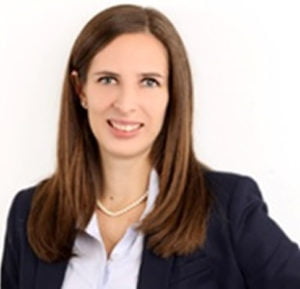 In 2008, the ECTS/AMGEN bone fellowship allowed me to work with Prof. Lorenz Hofbauer in Germany who has been a great inspiration for me ever since I worked on my diploma thesis which dealt with the RANKL/OPG system. The three year fellowship provided a terrific opportunity to continue my research in bone biology, which by then, I have grown very fond of. Moreover, it helped me to establish a scientific career in academia: using the data I have obtained from that study, I was able to publish and present at international meetings. Also, I was fortunate enough to receive several awards for my research work and obtain further funding based on my results. Thus, the ECTS/AMGEN bone fellowship was a critical step in the development of my research career, especially in the early phase of getting started and finding recognition in the research community. I am very grateful for having received such a prestigious award and want to highlight that the process of forming my research career would not have been as exciting and successful without the help of my amazing mentor, my precious colleagues, and the continuous support of the ECTS.
In 2008, the ECTS/AMGEN bone fellowship allowed me to work with Prof. Lorenz Hofbauer in Germany who has been a great inspiration for me ever since I worked on my diploma thesis which dealt with the RANKL/OPG system. The three year fellowship provided a terrific opportunity to continue my research in bone biology, which by then, I have grown very fond of. Moreover, it helped me to establish a scientific career in academia: using the data I have obtained from that study, I was able to publish and present at international meetings. Also, I was fortunate enough to receive several awards for my research work and obtain further funding based on my results. Thus, the ECTS/AMGEN bone fellowship was a critical step in the development of my research career, especially in the early phase of getting started and finding recognition in the research community. I am very grateful for having received such a prestigious award and want to highlight that the process of forming my research career would not have been as exciting and successful without the help of my amazing mentor, my precious colleagues, and the continuous support of the ECTS.
Andrea Del Fattore, 2007 Fellow
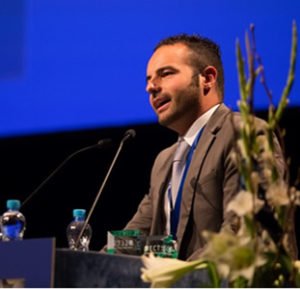 I am very honored to have received the ECTS/AMGEN fellowship in 2007, since it is one of the most important fellowships available for researchers in Europe and allowed me to perform a pre-clinical study regarding the bone loss in inflammatory diseases. It is a highly competitive fellowship and it represents a great opportunity for young investigators to start their independent career and to fund their own research in the field of bone physiology and diseases. Since it is a very prestigious fellowship it hugely increases the visibility of a researcher, opening new directions for further projects and collaborations.
I am very honored to have received the ECTS/AMGEN fellowship in 2007, since it is one of the most important fellowships available for researchers in Europe and allowed me to perform a pre-clinical study regarding the bone loss in inflammatory diseases. It is a highly competitive fellowship and it represents a great opportunity for young investigators to start their independent career and to fund their own research in the field of bone physiology and diseases. Since it is a very prestigious fellowship it hugely increases the visibility of a researcher, opening new directions for further projects and collaborations.
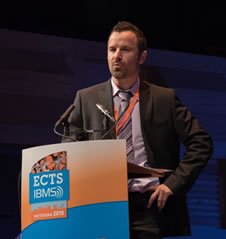
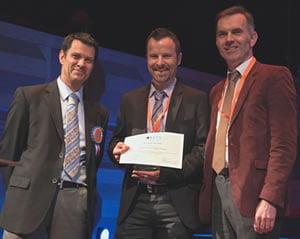
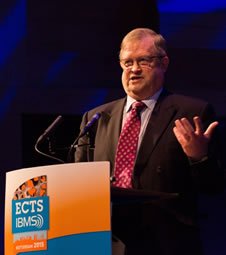
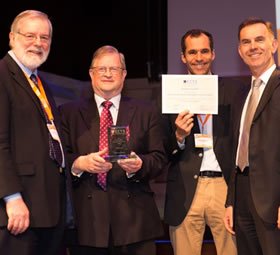
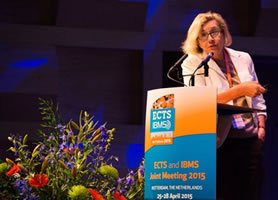
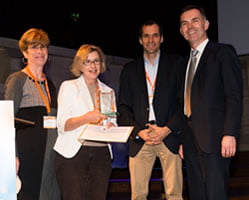
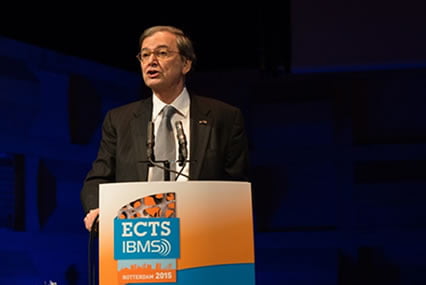
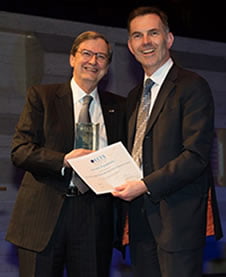
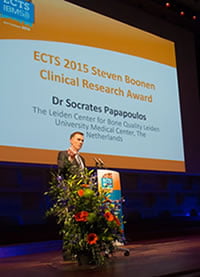
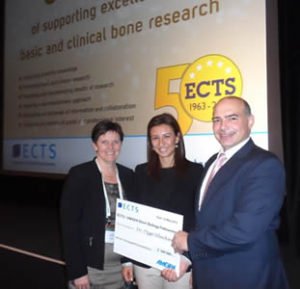 Ozge Uluckan, 2013 Fellow
Ozge Uluckan, 2013 Fellow